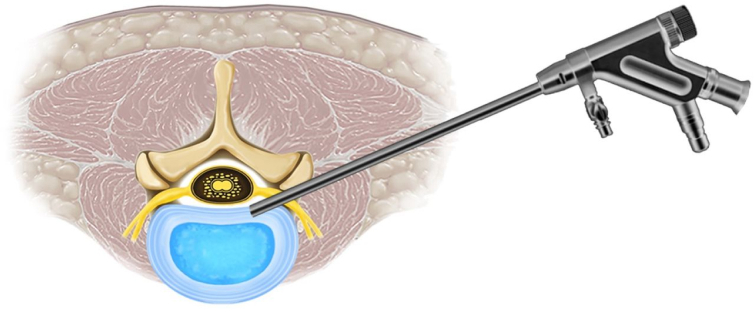Transforaminal Endoscopic Lumbar Discectomy (TELD) is a percutaneous procedure and a type of endoscopic discectomy. This method is conducted from the flank of the spine, utilising an endoscope to navigate through the natural opening in the spine known as the intervertebral foramen. The surgical process involves the use of an access port (obturator) and an endoscope equipped with a working channel, allowing for the passage of instruments during the surgery. Notably, the diameter of the entire port is a mere 9 mm.
A distinctive feature of percutaneous transforaminal endoscopic discectomy is the preservation of normal structures such as bone or ligaments. Throughout the procedure, a muscle-sparing, keyhole technique is employed in endoscopic surgery, irrespective of the surgical nature. This meticulous approach ensures that the primary objectives, namely nerve root decompression and the removal of disc fragments, remain uncompromised.

